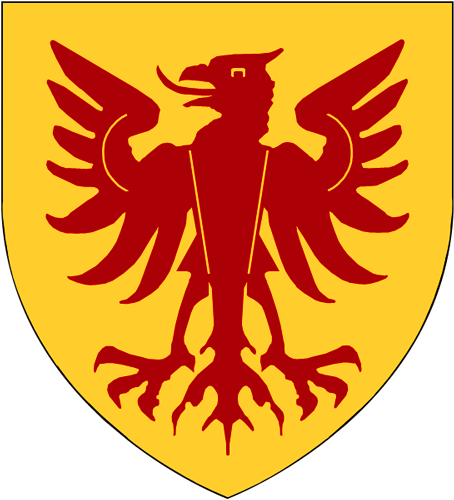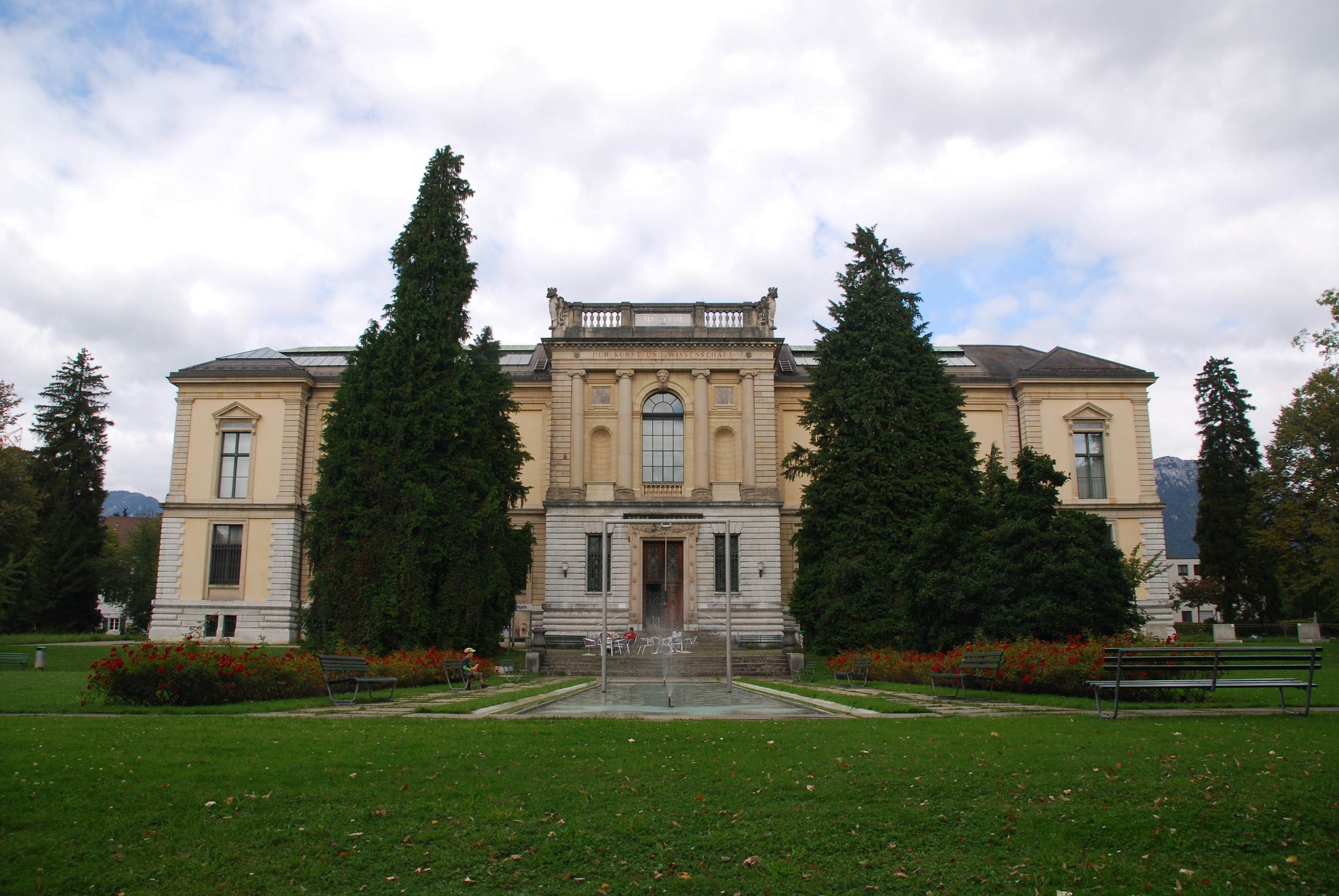|
Gaudenz Taverna
Gaudenz Taverna (12 October 1814, Chur - 22 October 1878, Solothurn) was a Swiss portrait painter and graphic artist. Biography His father was an innkeeper and warden. He began his art studies at the Accademia di San Luca in Rome. After that, he spent some time in Munich. Upon returning, he divided his time between Chur and Zürich. In 1841, he married Christina Walther von Tartar of Graubünden. In 1847, he became a drawing teacher at the Kantonsschule of Solothurn. Three years later, he was one of the founders of the Solothurner Kunstvereins (artists' association). He also drew caricatures for the satirical weekly, ''Postheiri'', from Thurgau. His paintings are mostly in the Biedermeier style. His works may be seen at the Kunstmuseum Solothurn and the Bündner Kunstmuseum Bündner Kunstmuseum (English: ''Graubünden Art Museum'') is a Swiss art museum founded in 1919, and located in Chur, Switzerland. About The Villa Planta building was formerly a house owned by Jacque ... [...More Info...] [...Related Items...] OR: [Wikipedia] [Google] [Baidu] |
Chur
, neighboring_municipalities= Arosa, Churwalden, Tschiertschen-Praden, Domat/Ems, Felsberg, Malix, Trimmis, Untervaz, Pfäfers , twintowns = Bad Homburg (Germany), Cabourg (France), Mayrhofen (Austria), Mondorf-les-Bains (Luxembourg), Terracina (Italy) '' Chur (, locally ; it, Coira ; rm, label=Sursilvan, Cuera ; rm, label= Vallader, Cuoira ; rm, label= Puter and Rumantsch Grischun, Cuira ; rm, label= Surmiran, Coira; rm, label=Sutsilvan, Cuera or ; french: Coire ) la, CVRIA, and . is the capital and largest town of the Swiss canton of the Grisons and lies in the Grisonian Rhine Valley, where the Rhine turns towards the north, in the northern part of the canton. The city, which is located on the right bank of the Rhine, is reputedly the oldest town of Switzerland. The official language of Chur is German,In this context, the term "German" is used as an umbrella term for any variety of German. A person is allowed to communicate with the authorities by ... [...More Info...] [...Related Items...] OR: [Wikipedia] [Google] [Baidu] |
Solothurn
, neighboring_municipalities = Bellach, Biberist, Feldbrunnen-Sankt Niklaus, Langendorf, Rüttenen, Zuchwil , twintowns = Heilbronn (Germany), Kraków (Poland), Le Landeron (Switzerland) Solothurn ( , ; french: Soleure ; it, Soletta ; rm, ) is a town, a municipality, and the capital of the canton of Solothurn in Switzerland. It is located in the north-west of Switzerland on the banks of the Aare and on the foot of the Weissenstein Jura mountains. The town is the only municipality of the district of the same name. The town got its name from Salodurum, a Roman-era settlement. From 1530 to 1792 it was the seat of the French ambassador to Switzerland. The pedestrian-only old town was built between 1530 and 1792 and shows an impressive array of Baroque architecture, combining Italian Grandezza, French style, and Swiss ideas. The town has eighteen structures listed as heritage sites. The official language of Solothurn is (the Swiss variety of Standard) German, but the mai ... [...More Info...] [...Related Items...] OR: [Wikipedia] [Google] [Baidu] |
Accademia Di San Luca
The Accademia di San Luca (the "Academy of Saint Luke") is an Italian academy of artists in Rome. The establishment of the Accademia de i Pittori e Scultori di Roma was approved by papal brief in 1577, and in 1593 Federico Zuccari became its first ''principe'' or director; the statutes were ratified in 1607. Other founders included Girolamo Muziano and Pietro Olivieri. The Academy was named for Luke the Evangelist, the patron saint of painters. From the late sixteenth century until it moved to its present location at the Palazzo Carpegna, it was based in an urban block by the Roman Forum and although these buildings no longer survive, the Academy church of Santi Luca e Martina, does. Designed by the Baroque architect, Pietro da Cortona, its main façade overlooks the Forum. History The Academy's predecessor was the ''Compagnia di San Luca'', a guild of painters and miniaturists, which had its statutes and privileges renewed at the much earlier date of 17 December 1478 b ... [...More Info...] [...Related Items...] OR: [Wikipedia] [Google] [Baidu] |
Thurgau
Thurgau (; french: Thurgovie; it, Turgovia), anglicized as Thurgovia, more formally the Canton of Thurgau, is one of the 26 cantons forming the Swiss Confederation. It is composed of five districts and its capital is Frauenfeld. Thurgau is part of Eastern Switzerland. It is named for the river Thur, and the name ''Thurgovia'' was historically used for a larger area, including part of this river's basin upstream of the modern canton. The area of what is now Thurgau was acquired as subject territories by the cantons of the Old Swiss Confederacy from the mid 15th century. Thurgau was first declared a canton in its own right at the formation of the Helvetic Republic in 1798. The population, , is . In 2007, there were a total of 47,390 (or 19.9% of the population) who were resident foreigners. History In prehistoric times the lands of the canton were inhabited by people of the Pfyn culture along Lake Constance. During Roman times the canton was part of the province ''Raetia' ... [...More Info...] [...Related Items...] OR: [Wikipedia] [Google] [Baidu] |
Biedermeier
The ''Biedermeier'' period was an era in Central Europe between 1815 and 1848 during which the middle class grew in number and the arts appealed to common sensibilities. It began with the Congress of Vienna at the end of the Napoleonic Wars in 1815 and ended with the onset of the Revolutions of 1848. Although the term itself derives from a literary reference from the period, it is used mostly to denote the artistic styles that flourished in the fields of literature, music, the visual arts and interior design. It has influenced later styles, especially those originating in Vienna. Background The ''Biedermeier'' period does not refer to the era as a whole, but to a particular mood and set of trends that grew out of the unique underpinnings of the time in Central Europe. There were two driving forces for the development of the period. One was the growing urbanization and industrialization leading to a new urban middle class, which created a new kind of audience for the arts. The ... [...More Info...] [...Related Items...] OR: [Wikipedia] [Google] [Baidu] |
Kunstmuseum Solothurn
The Kunstmuseum Solothurn or Art Museum Solothurn is an art museum in the Swiss town Solothurn. History The museum opened in 1902. The early exposition showed the town's collections of arts, historical artifacts and natural historical objects. Around 1980, the natural history collection was moved to the Naturmuseum Solothurn, the museumsbuilding was converted and since then exhibits art from various collections along with short-period exhibitions of contemporary art. Collection The collection has five divisions: old masters, Swiss landscapes from the 18th until the 20th century, Swiss contemporary art, and two separate collections from gifts from collectors; the Dûbi-Müller and Josef-Müller collection, focused on international atr from the late 19th and early 20th century, and a collection of works by Max Gubler. Highlights of the collection of old masters include a "Madonna of the Strawberries" from 1425, the '' Solothurner Madonna'' by Hans Holbein the Younger, and work ... [...More Info...] [...Related Items...] OR: [Wikipedia] [Google] [Baidu] |
Bündner Kunstmuseum
Bündner Kunstmuseum (English: ''Graubünden Art Museum'') is a Swiss art museum founded in 1919, and located in Chur, Switzerland. About The Villa Planta building was formerly a house owned by Jacques Ambrosius von Planta (1826–1901), built from 1874 to 1876 and designed by architect Johannes Ludwig. Bündner Kunstmuseum was founded in 1919 in the Villa Planta by the Bündner Kunstverein (English: ''Graubünden Art Association''). Around 1927, the natural history portion of the collection was moved next door in order to form the Natur- und Nationalpark-Museum (English: ''Nature and National Park Museum''). From 1987 to 1990, the Villa Planta was remodeled by local architect collective Peter Zumthor, Peter Calonder, and Hans-Jörg Ruch. In 2016, the museum added a cube-shaped building extension with a gridded facade in cast concrete, designed by architects Barozzi Veiga. The museum art collection contains work by Graubünden-local artists, and includes Angelica Kauffmann ... [...More Info...] [...Related Items...] OR: [Wikipedia] [Google] [Baidu] |
19th-century Swiss Painters
The 19th (nineteenth) century began on 1 January 1801 ( MDCCCI), and ended on 31 December 1900 ( MCM). The 19th century was the ninth century of the 2nd millennium. The 19th century was characterized by vast social upheaval. Slavery was abolished in much of Europe and the Americas. The First Industrial Revolution, though it began in the late 18th century, expanding beyond its British homeland for the first time during this century, particularly remaking the economies and societies of the Low Countries, the Rhineland, Northern Italy, and the Northeastern United States. A few decades later, the Second Industrial Revolution led to ever more massive urbanization and much higher levels of productivity, profit, and prosperity, a pattern that continued into the 20th century. The Islamic gunpowder empires fell into decline and European imperialism brought much of South Asia, Southeast Asia, and almost all of Africa under colonial rule. It was also marked by the collapse of the lar ... [...More Info...] [...Related Items...] OR: [Wikipedia] [Google] [Baidu] |
Swiss Male Painters
Swiss may refer to: * the adjectival form of Switzerland * Swiss people Places * Swiss, Missouri *Swiss, North Carolina * Swiss, West Virginia * Swiss, Wisconsin Other uses * Swiss-system tournament, in various games and sports *Swiss International Air Lines **Swiss Global Air Lines, a subsidiary *Swissair, former national air line of Switzerland *.swiss alternative TLD for Switzerland See also *Swiss made, label for Swiss products *Swiss cheese (other) *Switzerland (other) *Languages of Switzerland, none of which are called "Swiss" *International Typographic Style, also known as Swiss Style, in graphic design *Schweizer (other), meaning Swiss in German *Schweitzer Schweitzer is a surname. Notable people with the surname include: * Albert Schweitzer, German theologian, musician, physician, and medical missionary, winner of the 1952 Nobel Peace Prize * Anton Schweitzer, opera composer * Brian Schweitzer, forme ..., a family name meaning Swiss in German ... [...More Info...] [...Related Items...] OR: [Wikipedia] [Google] [Baidu] |
1814 Births
Events January * January 1 – War of the Sixth Coalition – The Royal Prussian Army led by Gebhard Leberecht von Blücher crosses the Rhine. * January 3 ** War of the Sixth Coalition – Siege of Cattaro: French garrison surrenders to the British after ten days of bombardment. ** War of the Sixth Coalition – Siege of Metz: Allied armies lay siege to the French city and fortress of Metz. * January 5 – Mexican War of Independence – Battle of Puruarán: Spanish Royalists defeat Mexican Rebels. * January 11 – War of the Sixth Coalition – Battle of Hoogstraten: Prussian forces under Friedrich Wilhelm Freiherr von Bülow defeat the French. * January 14 ** Treaty of Kiel: Frederick VI of Denmark cedes the Kingdom of Norway into personal union with Sweden, in exchange for west Pomerania. This marks the end of the real union of Denmark-Norway. ** War of the Sixth Coalition – Siege of Antwerp: Allied forces besiege Fre ... [...More Info...] [...Related Items...] OR: [Wikipedia] [Google] [Baidu] |







